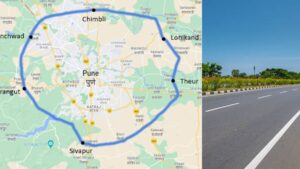Newly installed ITMS speed cameras on Mumbai-Pune Expressway impose Rs 2000 fine for exceeding speed limit by 4km/hr

ITMS Speed Cameras installed on gantries on Mumbai-Pune Expressway
Recently, Intelligent Traffic Management System (ITMS) was activated on Mumbai-Pune Expressway to monitor traffic and automatically penalize traffic violations. There are 115 cameras installed on 45 gantries and 50 poles. The system is designed to detect traffic violations such as speeding, lane cutting, driving without a seatbelt, and more.
However it was reported that the system was facing delays in challan issuance due to software glitches and errors. For instance, the system has erroneously issued challans to non driving passengers for using phone and for violations that did not occur.
Nevertheless, one user shared an incident where he was fined Rs. 2000 for violating speed limit by 4 km per hour. The cameras registered his vehicle’s speed at 64 km per hour against the prescribed speed limit of 60 km per hour for that particular stretch.
Here is a snapshot of the challan he received:
@HSPMaharashtra :
— Madhan Elango (@AuthorMadhan) August 12, 2024
Unbelievable-Speeding Challan Issued on MH14 Mumbai-Pune Expressway besides driving aware of the speed cameras they newly installed. received challan 64 km/h exceeding the speed limit of 60 km/h Very unfair @DGPMaharashtra@CMOMaharashtra @nitin_gadkari pic.twitter.com/fnElJJXuET
The purpose of this article is not to judge whether the challan was fair or not for exceeding the speed limit by just 4 km per hour. Rather, it is to make drivers aware that such a system is now fully functional on the Mumbai-Pune Expressway and they should ensure to adhere to speed limits, not just to avoid fines, but to ensure their and everyone else’ safety on the expressway. The speed limits are designed keeping in mind the condition of roads and the subsequent risk involved.
However, it is also imperative that such speed limits should be clearly displayed for the drivers to notice them easily for drivers to comply.




